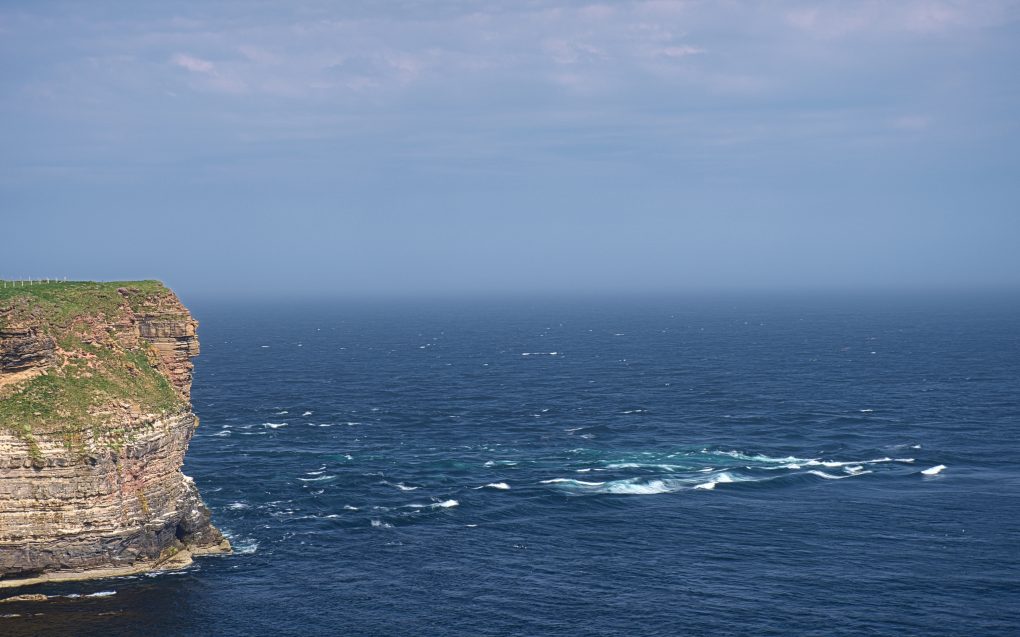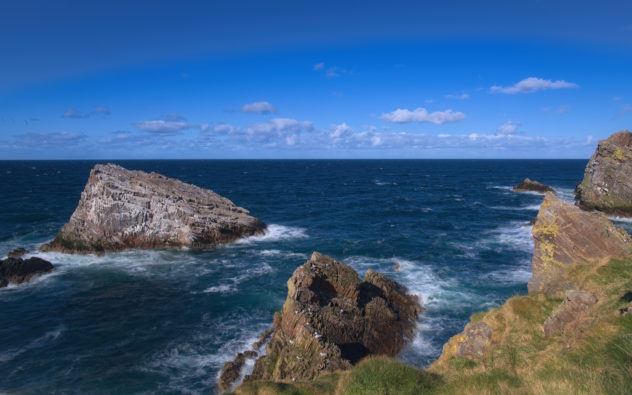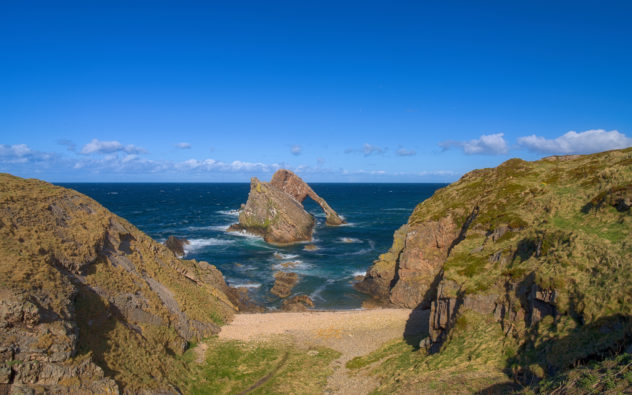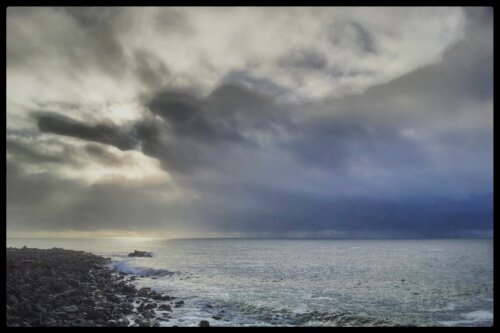Ignoring the previous post about offensive misuse of woodland, my fourth day of the holiday started out pretty well, with a trip to John o’Groats – awful tourist-trap of a place but at least they’ve renovated the hotel since I was last there and the ice-cream (2 scoops) was excellent.
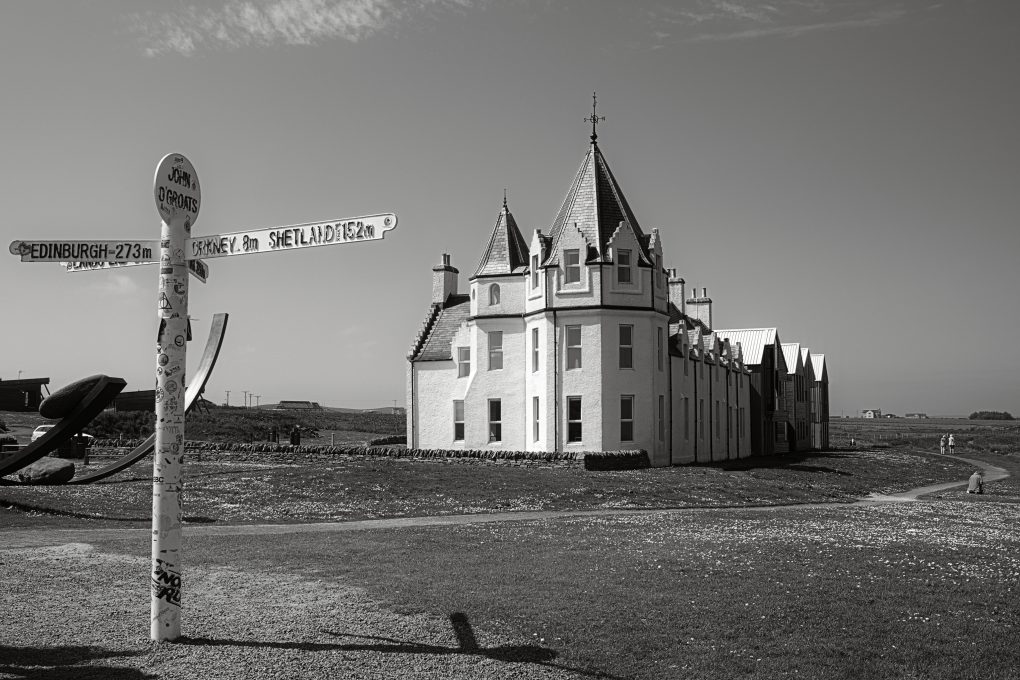
The famous hotel at John o’Groats. I’m pleased to see it’s had a much-needed renovation since I was last there. A total tourist-dump, but at least one of the shops offers rather good icecream on a sunny day. 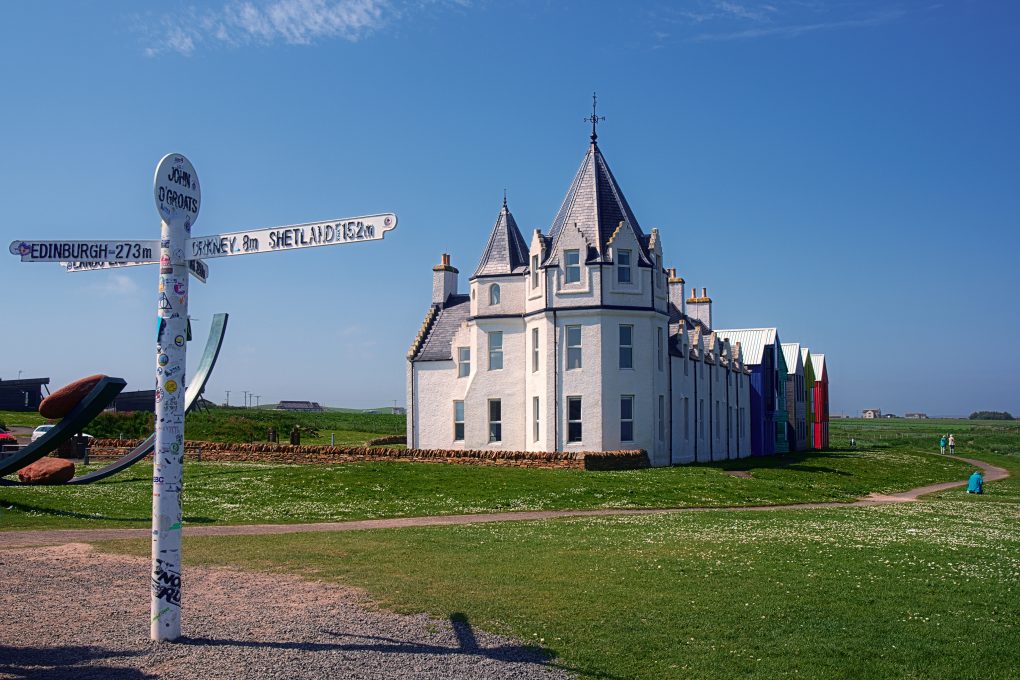
The famous hotel at John o’Groats. I’m pleased to see it’s had a much-needed renovation since I was last there. A total tourist-dump, but at least one of the shops offers rather good icecream on a sunny day. 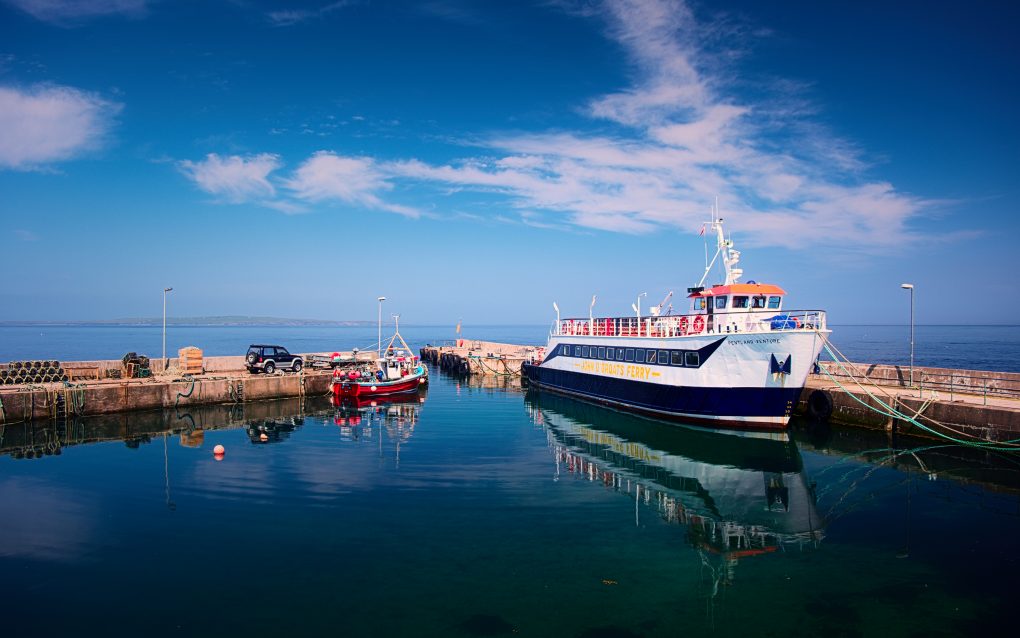
A ferry waiting in the harbour at John o’Groats 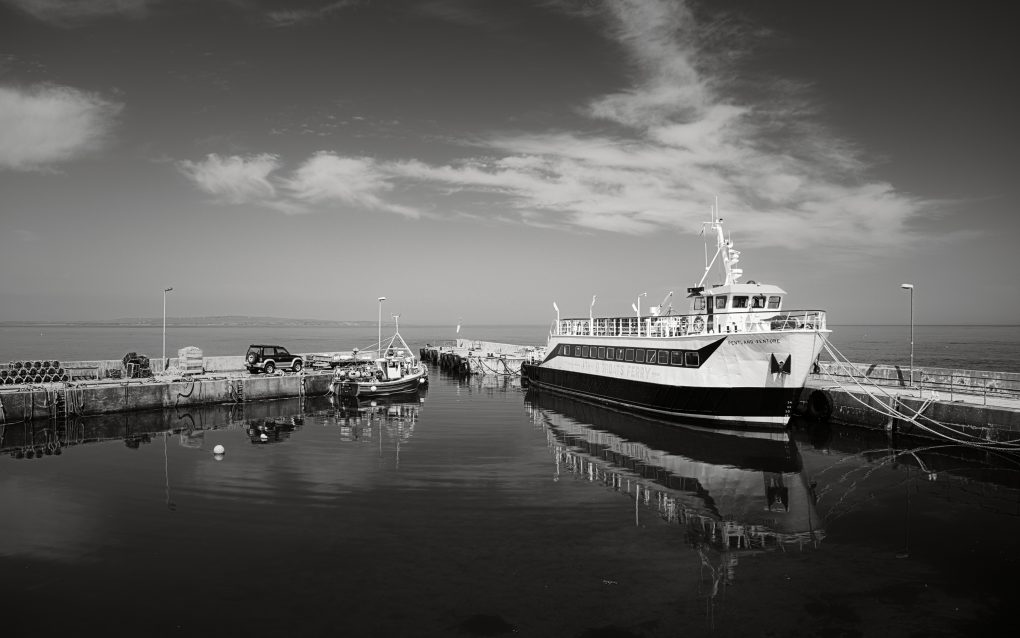
A ferry waiting in the harbour at John o’Groats
The sea stacks themselves are pretty awesome to behold, middle red sandstone showing evidence of having formerly been attached to the land but eroded away by the sea.
We proceeded to Duncansby Head – ignoring the lighthouse, walking down the coastline to the sea stacks. On the way, a large group – maybe 60 folks – were crowding some of the cliff-tops looking south, watching a small pod of Orcas swimming off distant headlands. Unfortunately the one kind of lens I didn’t have with me then was a long zoom – but the shouts of joy when one of the orcas blew or jumped were incredible.
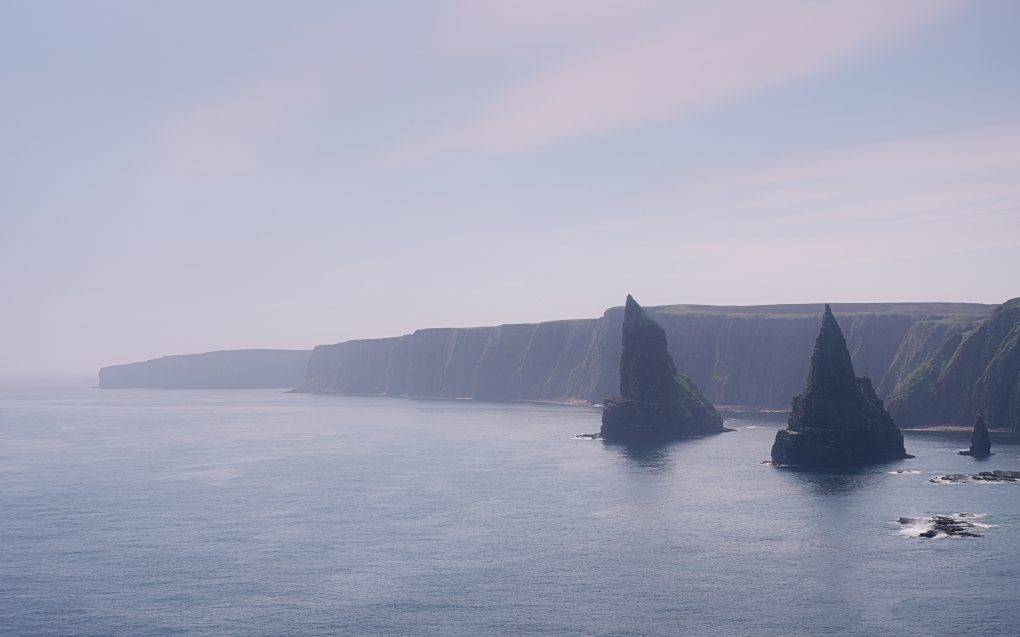
The far north-east corner of Scotland – subtle haze looking south into the light through the mist. As I shot this from a well-known viewpoint, there was a crowd of approximately 60 humans around, all watching a herd of orcas swimming off the far headland. 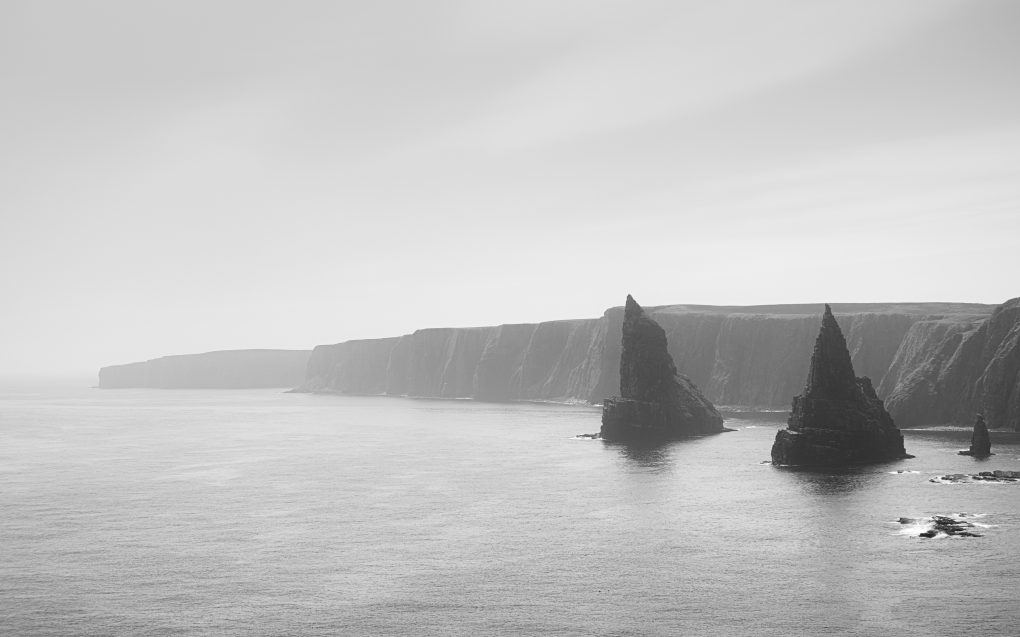
The far north-east corner of Scotland – subtle haze looking south into the light through the mist. As I shot this from a well-known viewpoint, there was a crowd of approximately 60 humans around, all watching a herd of orcas swimming off the far headland. 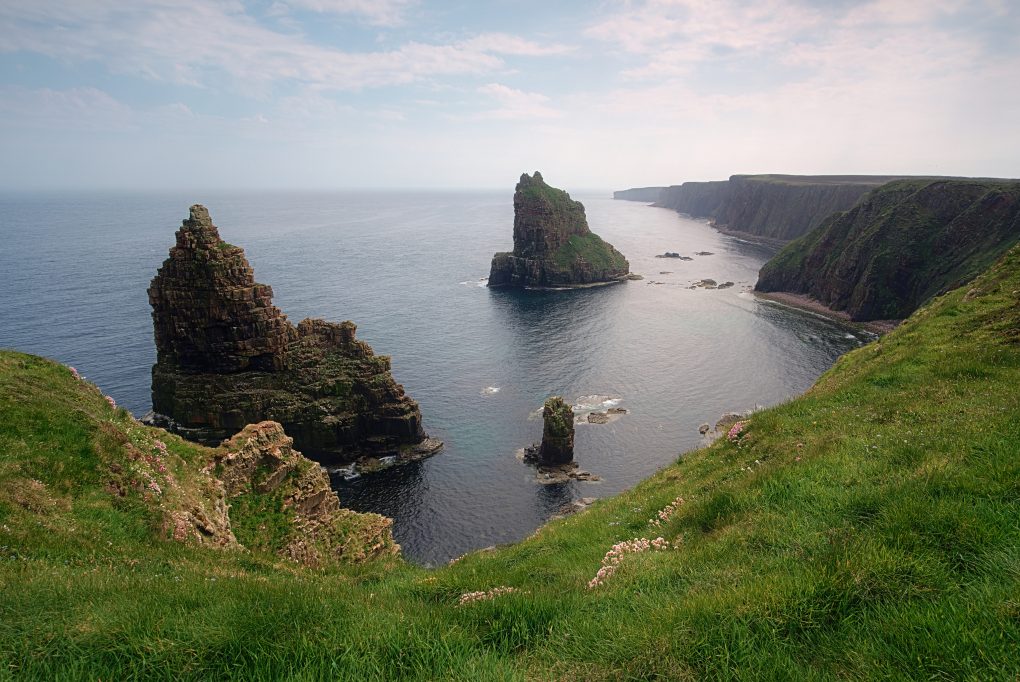
Coastline around the far north-east corner of Scotland: 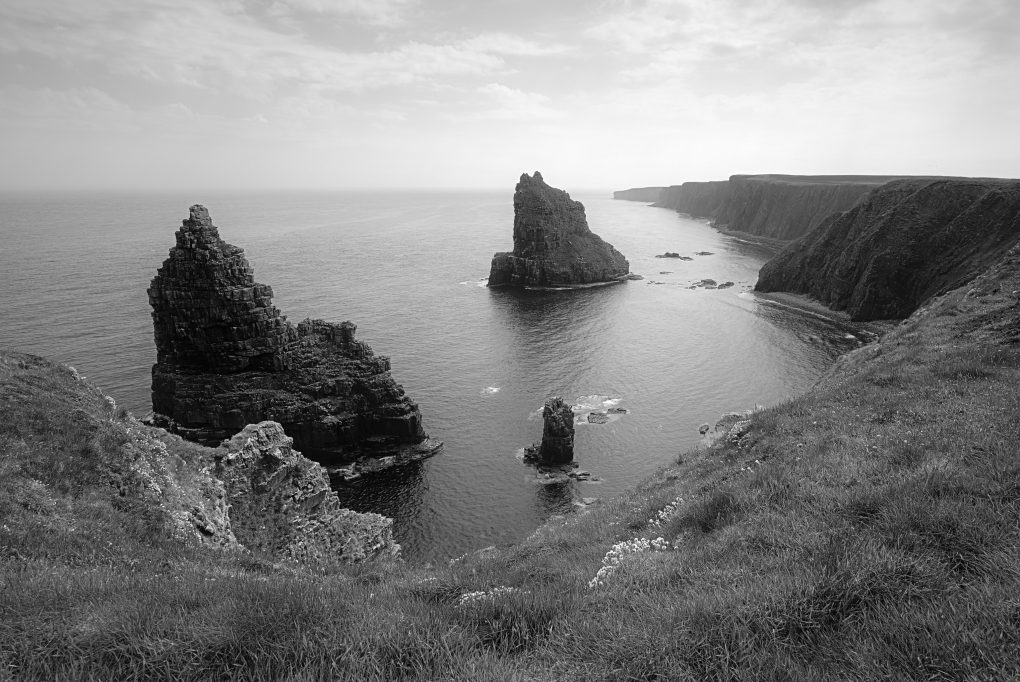
Coastline around the far north-east corner of Scotland: 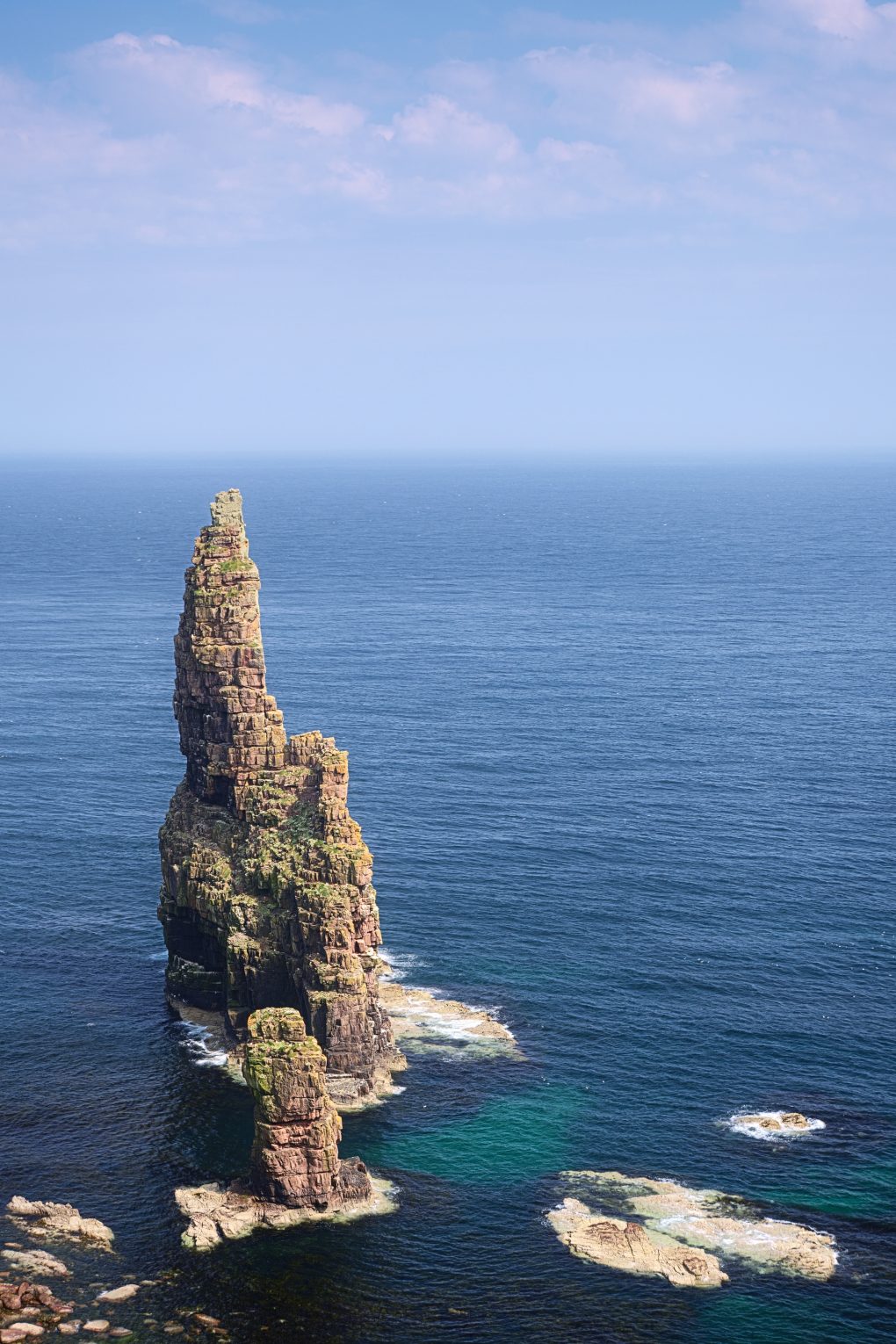
A better angle on the stacks – with the sun bright due south at noon, I walked further down the coast beyond them and looked back up north instead. 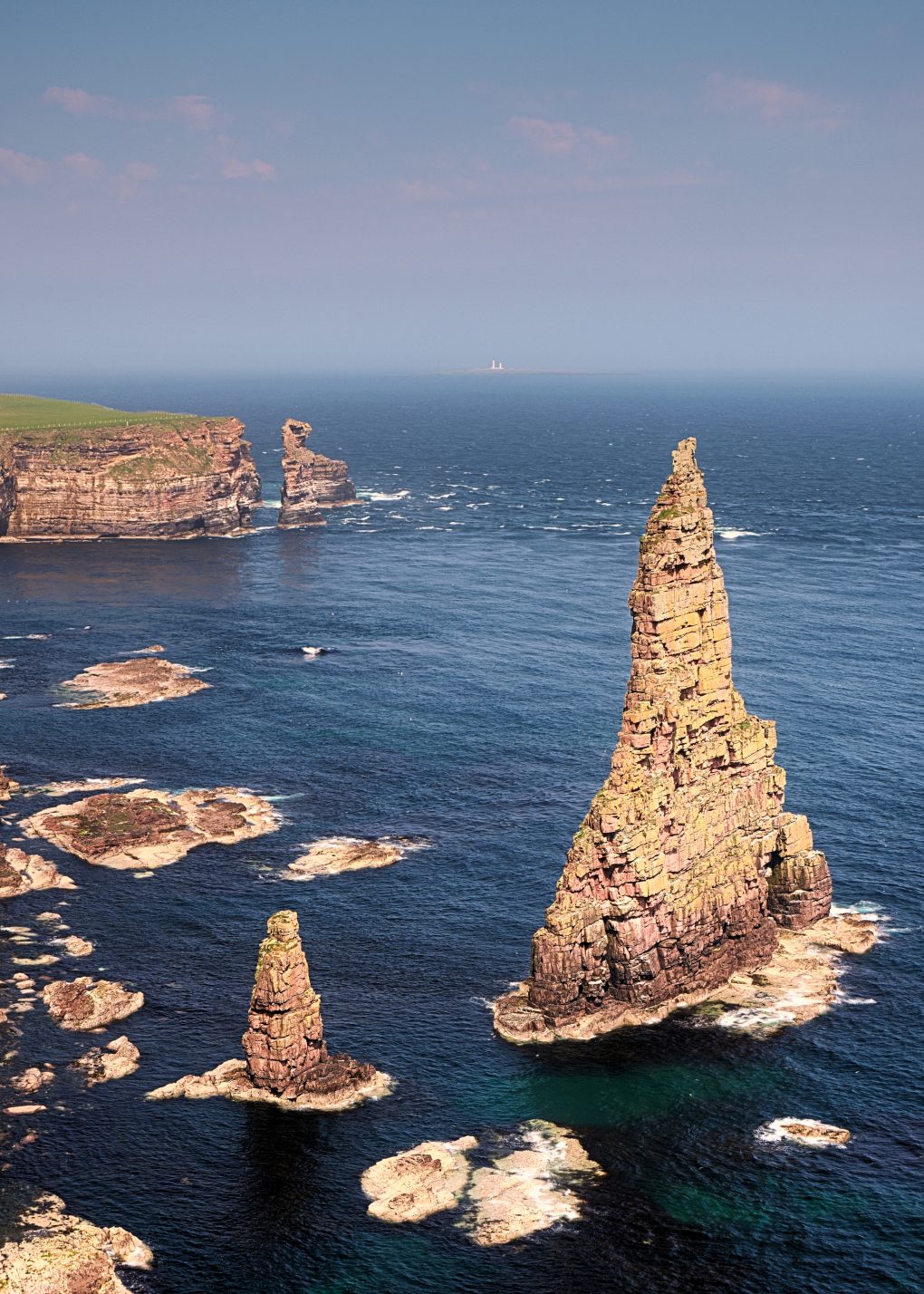
A better angle on the stacks – with the sun bright due south at noon, I walked further down the coast beyond them and looked back up north instead.
On the way back, a disturbance in the water just away from the cliffs caught my eye: a peculiar kind of standing wave with the shape staying more or less constant. Obviously a conflict of two tides, one running along the north coast between the mainland and Orkney, the other flowing up the North Sea; on checking wikipedia later, that corner of the Pentland Firth is known for two tidal races, the “Duncansby Race” and the “Boars of Duncansby”.
